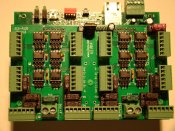Porsche
Full time elf
Hi guys, im just looking at some easier wring options for the future.
I know the P2's Im using are UNFUSED.
But J1's are saying the 8's and 12's are fused.
At the moment I don't run power through my P2's to the string, they are separately power.
But am I right in understanding the 8's and 12 units they have you can run the actual power through the unit to power the strings because they are fused. (until power injection is needed of coarse).
I know the P2's Im using are UNFUSED.
But J1's are saying the 8's and 12's are fused.
At the moment I don't run power through my P2's to the string, they are separately power.
But am I right in understanding the 8's and 12 units they have you can run the actual power through the unit to power the strings because they are fused. (until power injection is needed of coarse).



